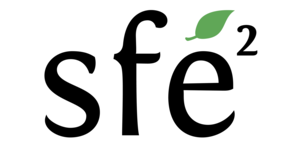Beet yellows virus (BYV) causes a serious disease in sugar beet. It is transmitted by aphids from one plant to another. Normally, BYV is restricted to the phloem and can only be acquired and inoculated by aphid vectors in this tissue. There is evidence in the literature that BYV can emerge from the phloem in late stages and infect other tissues such as the mesophyll. This could drastically change its transmission by aphids, since these insects reach these tissues faster than the phloem and could therefore acquire and transmit BYV much more rapidly.
The aim of this internship is to confirm whether BYV actually exits from the phloem and whether this changes the way it is transmitted. To this end, the kinetics of BYV accumulation will be monitored by RT-qPCR, its localization will be determined in infected leaves by fluorescent in situ hybridization (FISH) microscopy, and transmission tests with aphids will provide information on whether its mode of transmission has changed.
All the techniques required for the success of this internship (inoculation of plants with BYV, transmission tests, TaqMan RT-qPCR, SABER-FISH microscopy adapted to beet) are well established in the lab.
This internship will take place at INRAE Colmar (30 min by train from Strasbourg) in the Virus-Vection (ViVe) team, which also works on the transmission of plant viruses by aphids and nematodes. Supervision will be provided by Martin Drucker (research director) and Souheyla Khechmar (postdoc). More information: https://svqv.colmar.hub.inrae.fr/personnel/drucker-martin
Le beet yellows virus (BYV) provoque une maladie grave chez la betterave à sucre. Il est transmis par pucerons d’une plante à l’autre. Normalement, le BYV est restreint au phloème et peut exclusivement être acquis et inoculé par les pucerons vecteurs dans ce tissu. Il y a évidence dans la littérature que le BYV peut sortir du phloème dans les étapes tardives et infecter d’autres tissus comme le mésophylle. Ceci pourrait changer drastiquement sa transmission par pucerons, puisque ces insectes atteignent ces tissus plus vite que le phloème et pourraient donc acquérir et transmettre le BYV beaucoup plus rapidement.
Ce stage vise à confirmer si le BYV sort effectivement du phloème et si ça change les modalités de sa transmission. Pour ceci, la cinétique de l’accumulation du BYV sera suivie par RT-qPCR, sa localisation sera déterminée dans les feuilles infectées par microscopie en mode fluorescent in situ hybridization (FISH) et des tests de transmission avec pucerons renseigneront si son mode de transmission change.
Toutes les techniques requises pour la bonne réussite de ce stage (inoculation des plantes avec le BYV, tests de transmission, RT-qPCR TaqMan, microscopie SABER-FISH adaptée à la betterave) sont bien établies dans le labo.
Ce stage se déroulera à l’INRAE Colmar (30 min en train de Strasbourg) dans l’équipe Virus-Vection (ViVe), qui travaille entre outre sur la transmission des virus de plantes par pucerons et nématodes. L’encadrement sera assuré par Martin Drucker (directeur de recherche) et Souheyla Khechmar (postdoctorante). Plus d’infos : https://svqv.colmar.hub.inrae.fr/personnel/drucker-martin

Commentaires récents